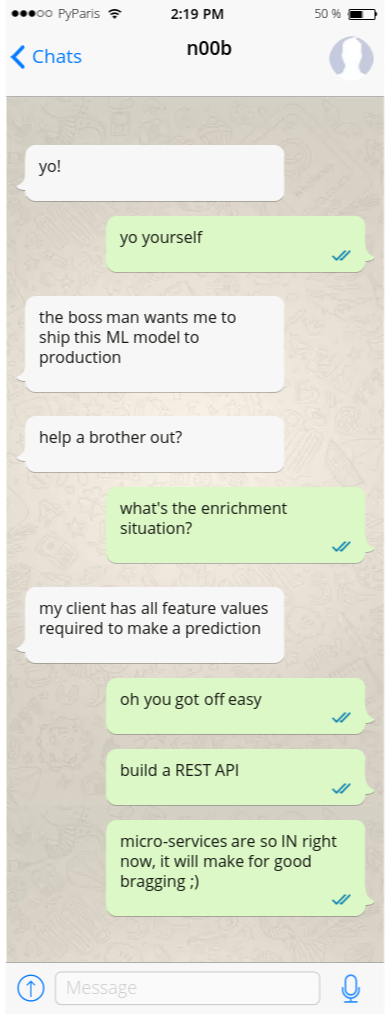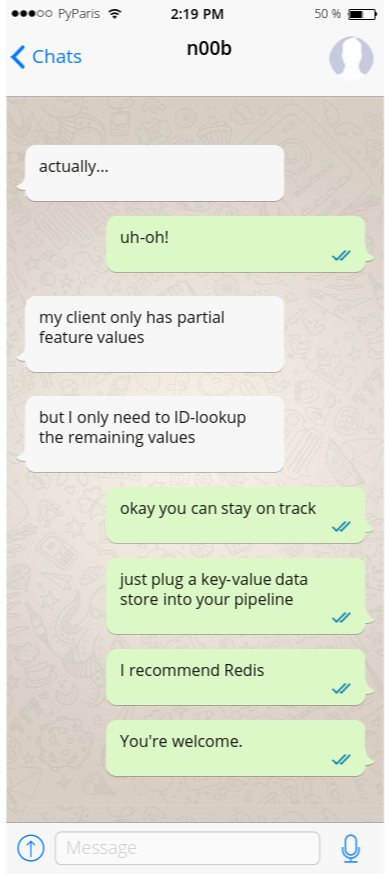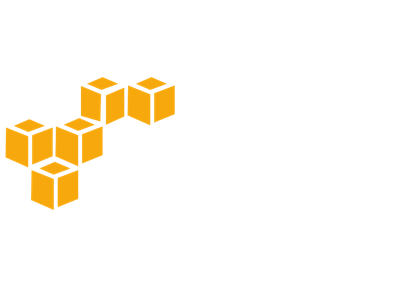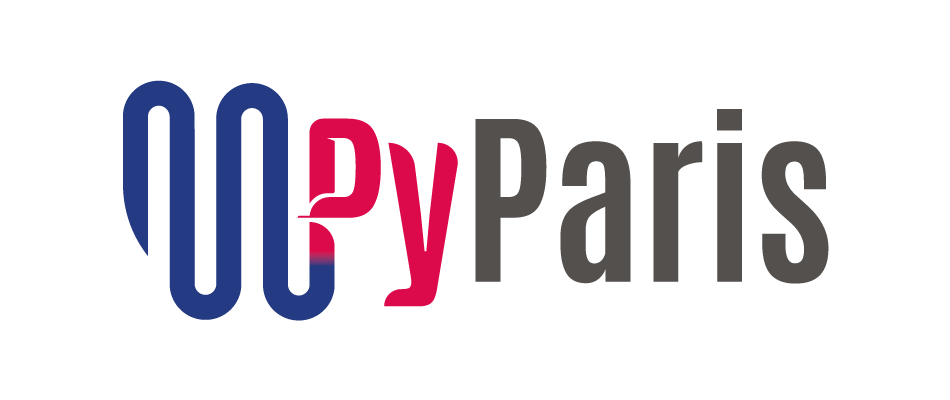Deploying Machine Learning Models to Production
Nawfal Tachfine
Data Scientist
Typical Data Science Workflow
formulate
problem
get data
build and clean dataset
study dataset
train model
+ feature selection
+ algorithm selection
+ hyperparameter optimization
Then what?

Enter Industrialization...
goal = "automatically serve predictions to any given information system"
philosophy = "start from final use case and work your way back to data-prep"
potential_constraints = [
data_sources,
data_enrichment,
model_stability,
scalability,
resilience,
resources
]
The Data Dependency Problem



Design Patterns
-
Think about your production use-case as early as possible.
- Your data pre-processing pipelines must be deterministic and reproduce the same conditions as in training.
- make your transformations robust against abnormal values
- variable order matters (cf. scikit-learn)
- Log as much as you can.
- Write clean code: your models will evolve (re-training, new features, ... etc)
- Keep things simple: stability trumps complexity.
Building a Prediction API
-
Web app framework: Flask
- simple,
- lightweight,
- powerful





This approach is based on serialization and can be used for models trained with librairies other than scikit-learn.
@app.route('/api/v1.0/aballone', methods=['POST'])
def index():
query = request.get_json()['inputs']
data = prepare(query)
output = model.predict(data)
return jsonify({'outputs': output})
if __name__ == '__main__':
app.run(host='0.0.0.0')Toolbox
Building a Prediction API
- I/O: JSON
- universal support
-
Virtualization: Docker
- no more dependency problems,
- run (almost) anywhere
- Deployment: AWS Elastic Beanstalk
- (very) easy to use,
- (relatively) cheap,
- provides auto-scaling and load-balancing.





Toolbox
Demo Time!





